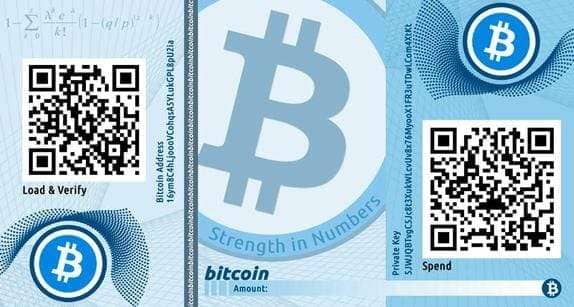Content
- Ethereum developers launch seven testnets in preparation for the Shanghai hard fork
- What else is in the Shanghai hard fork?
- What is Proof of Stake?
- Staking as a service
- Advantages Of Bitcoin Casino In Australia
- Total difficulty triggering the upgrade
- Will a Proof-of-Stake Ethereum Lead to More Centralization?
Proof-of-stake is designed to address some of the criticisms of proof-of-work. TL;DR Blocktime will be annoying in second half of 2017 and the final doom happens somewhere in 2021. This question does not appear to be about a specific programming problem, a software algorithm, or software tools primarily used by programmers. If you believe the question would be on-topic on another Stack Exchange site, you can leave a comment to explain where the question may be able to be answered.gartenmöbel design
bettwäsche tom und jerry
planeta sport muske patike novi pazar
giorgio armani sport
adidas beckenbauer trening
bomber jakke burgunder
гуми 18 цола
esprit round sunglasses
liemenes mergaitems
windows wont connect to iphone usb

PoW blocks that are descendants of any terminal PoW block MUST NOT be imported. This implies that a terminal PoW block will be the last PoW block in the canonical chain. FIRST_FINALIZED_BLOCK The first finalized block that is designated by POS_FORKCHOICE_UPDATED event and has the hash that differs from the stub. You’ll still be able to head to block explorers like Etherscan to get a complete record of the Ethereum blockchain. During the merge, crypto exchanges paused trading for ETH and Ethereum-related tokens as a precautionary measure. For tokens worth $1 could cost you over $50 in transaction fees.
Ethereum developers launch seven testnets in preparation for the Shanghai hard fork
In the proof-of-stake system Ethereum is slowly moving to, you put up 32 ether—currently worth $100,000—to become a validator. If you don’t have that kind of spare change on hand, and not many people do, you can join a staking service where participants serve as validators jointly. Roughly every 10 minutes, Bitcoin miners compete to solve a puzzle. The winner appends the next block to the chain and claims new bitcoins in the form of the block reward. Proof of work pits miners against each other, as they compete to solve a difficult math problem.
Rather than graphic card hashpower representing a miner’s right to make guesses for the next block, their ether holdings do. This means miners use their graphics cards to essentially guess random numbers until somebody guesses the right number. Each guess is based on the past Ethereum transaction ledger and therefore represents a “vote” for what a miner believes is the “correct” chain. It is in miners’ economic self-interest to make guesses based on the “correct” chain because they won’t get rewarded for guessing on the wrong chain. Ethereum uses 113 terawatt-hours per year—as much power as the Netherlands, according to Digiconomist.
Several pooling solutions now exist to assist users who do not have or feel comfortable staking 32 ETH. Those considering solo staking should have at least 32 ETH and a dedicated computer connected to the internet ~24/7. Some technical know-how is helpful, but easy-to-use tools now exist to help simplify this process.
This focal point provided by the “most work done” rule in proof of work is the only way to make a blockchain permissionless, decentralized, and censorship resistant. Ethereum needs to move to proof of stake so it doesn’t further exacerbate the environmental horrors of Bitcoin. The question is, will its new system fulfill all the promises made for proof of stake? If a public blockchain isn’t decentralized, what is the point of proof of anything? You end up doing all that work—consuming vast amounts of energy or staking all those coins—for nothing other than maintaining an illusion.
What else is in the Shanghai hard fork?
Under proof of stake, transactions are confirmed by addresses that have staked—pledged to a smart contract—lots of ETH. Those who have staked more ETH earn proportionately higher rewards. While proof of stake conceptually https://xcritical.com/ makes the rich richer, it doesn’t boil the oceans, either. This “proof-of-work” consensus mechanism, which requires computers to agree on which transactions will be added to a new block, is very energy-intensive.

If it happens again, the success behind any competing version of Ethereum will depend on the value of its coin in the open markets. This is a challenging problem, and until the Bitcoin network first solved it in 2008 by using Proof of Work (a.k.a. “mining”, a.k.a. “hashing”) no really good solutions were known. So the “performance” of the algorithm wasn’t originally that important–the fact that it could be done at all was impressive enough. In September 2022, Ethereum completed an upgrade that changed the consensus mechanism for the blockchain from proof-of-work to proof-of-stake , which reduced energy consumption by about 99%. Learn more about Consensus 2023, CoinDesk’s longest-running and most influential event that brings together all sides of crypto, blockchain and Web3. Head to consensus.coindesk.com to register and buy your pass now.
What is Proof of Stake?
Jayanthi also stated in his tweet that once the upgrade is triggered, users can test withdrawals. If you continue to get this message, reach out to us at customer- with a list of newsletters you’d like to receive. In the case of Bitcoin, this ended up putting a handful of big companies in control of the network. But it’s an approach that’s fraught with complications, given platforms’ whims and proliferating scams. Not only does proof of work waste electricity, it generates electronic waste as well. Specialized computer servers used for crypto mining often become obsolete in 1.5 years, and they end up in landfills.
- This is a safe space for ALL Ethereum stakers, regardless of how they stake.
- The reason Ethereum is expensive to operate on is because there is a significant demand to operate on the platform.
- TERMINAL_BLOCK_HASH – set to the hash of a certain block to become the terminal PoW block.
- In addition, liquid staking tokens, like stETH, may face a severe liquidity crunch.
Miners use powerful computers that solve complex maths puzzles and update the blockchain, earning new crypto tokens. While this makes records on the blockchain secure, it’s highly energy-intensive. Proof-of-stake, by design, reduces the amount of energy and computing power required to manage the transactions and secure the blockchain. The blockchain is the transaction and transfers record of every token on that chain.
Staking as a service
The miner adds a new block and broadcasts it to the network of nodes. These nodes from that moment will individually perform audits of the existing ledger and the new block. The process is called mining because it requires energy and resources to complete the task. The process is a digital version of mining precious metals from the planet.
Interested in learning more about Besu’s Bonsai Storage mode?
See how Bonsai is ideal for running Proof of Stake infrastructure (and any Ethereum node set-up) by reducing storage requirements, and keeping state storage in check over time https://t.co/WrOlU3uKPQ
— Hyperledger Besu (@HyperledgerBesu) May 17, 2022
For PoS, Ethereum uses LMD-GHOST algorithm which identifies the fork which has the greatest amount of Votes in its history. This happens every 12–13 seconds, the time of a new block on Ethereum. Also on the horizon are changes to EVM Object Format , which includes several small upgrades to improve the Ethereum Virtual Machine. When social media accounts of big brands or NFT projects get hacked, all hell will break loose. Travis Hoium has positions in Coinbase Global, Ethereum, and Solana.
Advantages Of Bitcoin Casino In Australia
A header of every block that belongs to a particular chain is required to justify the validity of this chain with respect to the PoW seal. TERMINAL_TOTAL_DIFFICULTY – set to the total difficulty value of a block designated by TERMINAL_BLOCK_HASH. Not importing PoW blocks that are beyond the terminal PoW block prevents these adverse effects on safety/re-orgs in the event of software or configuration failures in favor of a liveness failure. To protect the network from this attack scenario, difficulty accumulated by the chain is used to trigger the upgrade. Although this EIP does not introduce any explicit changes to the EVM there are a couple of places where it may affect the logic of existing smart contracts. Existing rewards for producing and sealing blocks are deprecated along with the PoW mechanism.

But the bad news is that proof-of-work consumes a lot of energy. This excessive expenditure leads to a negative impact on the environment. And that’s one of the reasons why Ethereum wants to switch to proof-of-stake. Proponents believe the Merge will make Ethereum more favourable compared to arch-rival bitcoin — the world’s top cryptocurrency — in terms of price and usability. Most recently, ether fell some 8% on April 11 after an Ethereum lead developer said plans for the event set for June had been pushed back as tests on the software continued.
Total difficulty triggering the upgrade
Energy consumption on hash calculations is estimated to be around Iceland’s energy consumption. That is the reason why a lot of smart guys are trying to solve that with Proof-of-Stake. There is a long technical article written by Vitalik to understand this subject more deeply.
Sekarang #Ethereum belum panas, tapi nanti bulan depan setelah testnet terakhir selesai yakni Goerli itu menurut saya mulai panas, karena di September The Merge Proof of Stake.
Kalau Goerli sudah selesai saya bakal mode “Hold” kurangin trading ETH dulu, sabar aja 2 bulan lagi 👍 https://t.co/R9LnXrP4Nw
— Kapten Crypto 707 (@kaptencrypto707) July 12, 2022
You’ll also be able to withdraw any ETH you’ve staked on Ethereum 2.0. Depending on the network, certain factors, such as how many coins are staked and how long the coins have been staked, determine whether or not a validator gets to verify a new block of transactions . As with PoW, if you validate a new block of transactions, you’ll get rewarded in new crypto.
Will a Proof-of-Stake Ethereum Lead to More Centralization?
When you send cryptocurrency to the smart contract’s wallet address, the contract holds that currency, sort of like depositing money in a vault. In order to run a validator and earn staking rewards, participants must stake 32 ETH, which is worth roughly $65,800 at current prices. The launch of Ethereum 2.0 will not cause a huge impact on users’ interactions with blockchain dApps or cryptocurrency exchanges and services. Currently, the Ethereum network can only process around 12 to 25 tps with an average confirmation time of 6 minutes. The result is that the Ethereum network is heavily congested with people all vying to process transactions, resulting in high gas fees. Whether or not you get the airdrop of the ETHPOW/ETHW token depends on where your ETH is held at the time of the Merge and fork.
A validator client is the software that acts on behalf of the validator by holding and using its private key. A single validator client can hold many key pairs, controlling many validators. The consensus process is executed by miners who compete to solve complex mathematical problems. The winning miner verifies the transactions, completes the block, adds it to the chain and receives the reward. A Tuesday Twitter post from Ethereum developer Barnabas Busa indicates that following the launch of Zhejiang, the testnets for Shanghai and Capella will be triggered six days later at epoch 1350. “You will be able to deposit validators, practice BLS change and exit without risk,” Busa wrote.
It’s also led to problems with scalability and high transaction fees. The idea here is that in the event of a fork , block generators have nothing to lose by supporting different blockchains, essentially preventing the conflict from ever resolving. Large mining-pools ethereum speedier proofofstake can control over 51% of networks running PoW systems, leading to a very real threat of centralisation. This comes as a result of the exponential increase in reward per investment on PoW systems, as opposed to the linear increase on PoS systems.
